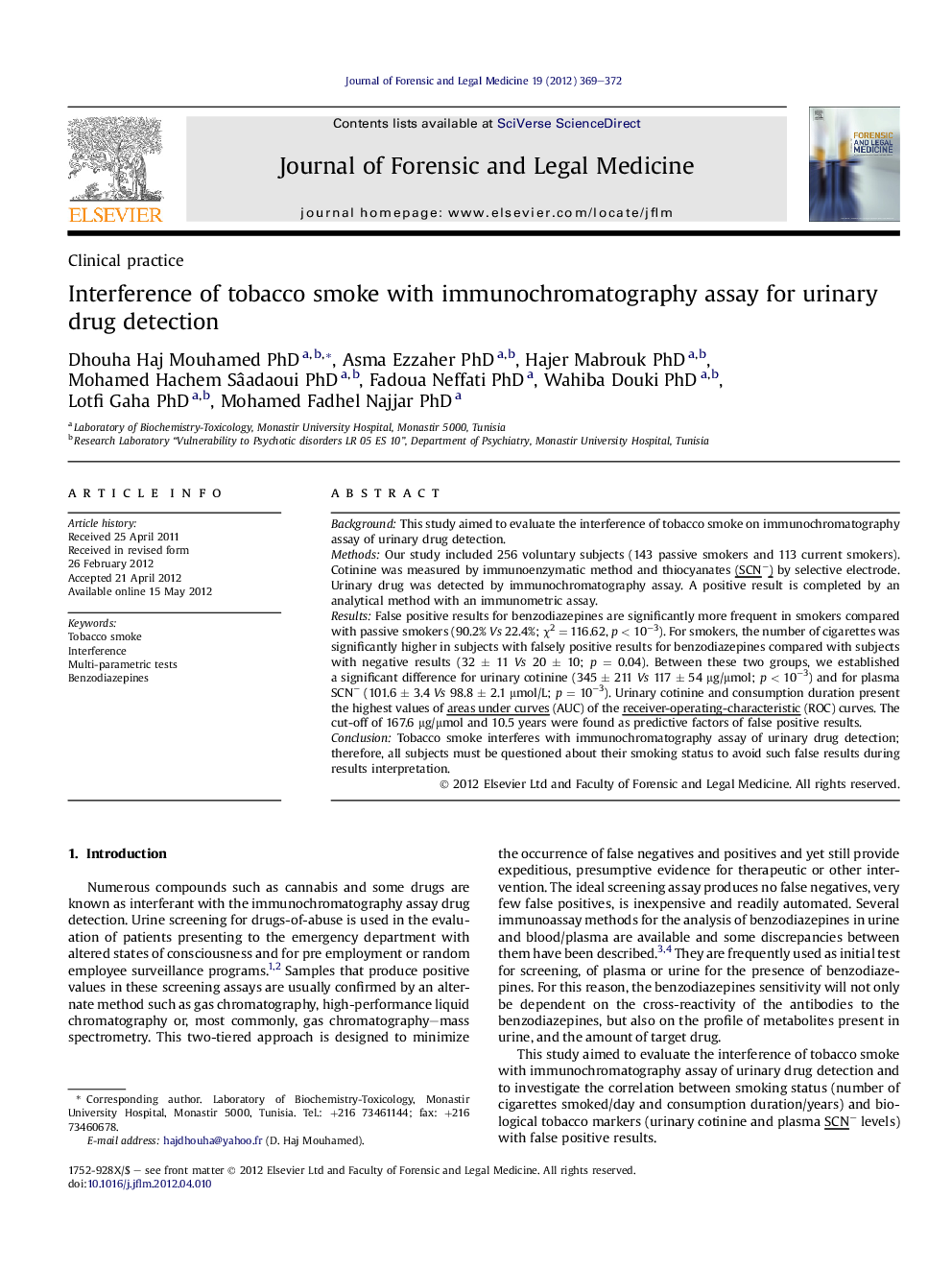| Article ID | Journal | Published Year | Pages | File Type |
|---|---|---|---|---|
| 102046 | Journal of Forensic and Legal Medicine | 2012 | 4 Pages |
BackgroundThis study aimed to evaluate the interference of tobacco smoke on immunochromatography assay of urinary drug detection.MethodsOur study included 256 voluntary subjects (143 passive smokers and 113 current smokers). Cotinine was measured by immunoenzymatic method and thiocyanates (SCN−) by selective electrode. Urinary drug was detected by immunochromatography assay. A positive result is completed by an analytical method with an immunometric assay.ResultsFalse positive results for benzodiazepines are significantly more frequent in smokers compared with passive smokers (90.2% Vs 22.4%; χ2 = 116.62, p < 10−3). For smokers, the number of cigarettes was significantly higher in subjects with falsely positive results for benzodiazepines compared with subjects with negative results (32 ± 11 Vs 20 ± 10; p = 0.04). Between these two groups, we established a significant difference for urinary cotinine (345 ± 211 Vs 117 ± 54 μg/μmol; p < 10−3) and for plasma SCN− (101.6 ± 3.4 Vs 98.8 ± 2.1 μmol/L; p = 10−3). Urinary cotinine and consumption duration present the highest values of areas under curves (AUC) of the receiver-operating-characteristic (ROC) curves. The cut-off of 167.6 μg/μmol and 10.5 years were found as predictive factors of false positive results.ConclusionTobacco smoke interferes with immunochromatography assay of urinary drug detection; therefore, all subjects must be questioned about their smoking status to avoid such false results during results interpretation.
